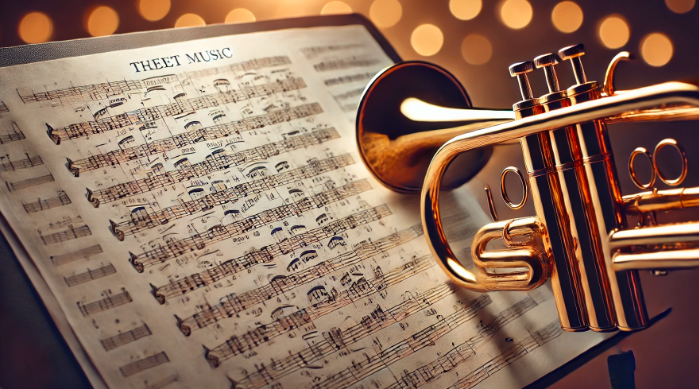Introduction
Practicing scales is a fundamental part of mastering the trumpet. Whether you’re a beginner or an advanced player, having a structured guide to trumpet scale patterns can significantly enhance your technical abilities and musicality. This guide provides a comprehensive overview of various scales, patterns, and exercises designed to develop finger dexterity, articulation, and improvisation skills. If you’re looking for a trumpet scale patterns PDF, this guide offers a detailed and structured approach to learning and mastering scales effectively.
Fundamentals of Music Theory
Before diving into trumpet scale patterns, it’s essential to understand some basic music theory concepts. Music notation, intervals, and the chromatic scale serve as the building blocks for scales. Intervals refer to the distance between two notes, while the chromatic scale consists of twelve semitones that form the foundation of all scales. Understanding these elements will help in grasping more complex patterns.
Major Scales
Major scales are the backbone of most music compositions and are often the first set of scales that musicians learn. Each major scale consists of a specific pattern of whole and half steps (W-W-H-W-W-W-H). Below is a table showing the notes for all 12 major scales:
| Scale | Notes |
|---|---|
| C Major | C – D – E – F – G – A – B – C |
| G Major | G – A – B – C – D – E – F# – G |
| D Major | D – E – F# – G – A – B – C# – D |
| A Major | A – B – C# – D – E – F# – G# – A |
| E Major | E – F# – G# – A – B – C# – D# – E |
| B Major | B – C# – D# – E – F# – G# – A# – B |
| F# Major | F# – G# – A# – B – C# – D# – E# – F# |
| Db Major | Db – Eb – F – Gb – Ab – Bb – C – Db |
| Ab Major | Ab – Bb – C – Db – Eb – F – G – Ab |
| Eb Major | Eb – F – G – Ab – Bb – C – D – Eb |
| Bb Major | Bb – C – D – Eb – F – G – A – Bb |
| F Major | F – G – A – Bb – C – D – E – F |
Playing these scales with a metronome at different tempos will improve your precision and speed.
Minor Scales
Minor scales add emotional depth to music and are categorized into three types: natural, harmonic, and melodic. Each minor scale has a different note pattern, making them distinct in sound and feel.
Natural Minor Scale
The natural minor scale follows the pattern W-H-W-W-H-W-W. For example, the A natural minor scale consists of the notes A – B – C – D – E – F – G – A.
Harmonic Minor Scale
This scale is similar to the natural minor but features a raised seventh note, creating a unique harmonic sound. The A harmonic minor scale is A – B – C – D – E – F – G# – A.
Melodic Minor Scale
The melodic minor scale differs in its ascending and descending forms. Ascending, it raises both the sixth and seventh notes, while descending, it follows the natural minor pattern.
Chromatic Scales
The chromatic scale consists of twelve semitones, incorporating every note within an octave. Practicing the chromatic scale enhances finger coordination and speed. The pattern is simply a series of consecutive half-steps, such as C – C# – D – D# – E – F – F# – G – G# – A – A# – B – C.
Diminished and Augmented Scales
Diminished and augmented scales add complexity to musical pieces. Diminished scales alternate whole and half steps, while augmented scales expand intervals between notes. These are particularly useful for jazz improvisation.
Modal Scales
Modes offer a diverse range of tonalities used in jazz and classical music. Common modal scales include Ionian (major), Dorian (minor), and Mixolydian (dominant). Understanding modes allows musicians to experiment with different harmonic colors.
Arpeggios
Arpeggios are broken chords that help trumpet players with interval jumps and finger agility. Common arpeggios include major, minor, diminished, and augmented forms.
Scale Patterns for Jazz Improvisation
Jazz musicians often use scales in creative ways to improvise. Patterns such as the 2-5-1 progression or bebop scales enhance improvisational skills. Playing scale fragments in different rhythmic patterns aids in developing a unique style.
Technical Exercises
Technical drills improve articulation, endurance, and embouchure control. Some effective exercises include:
- Slurred and Tongued Scales – Playing scales in different articulation patterns.
- Octave Jumps – Practicing scales over a wide range to expand flexibility.
- Speed Training – Using a metronome to gradually increase tempo.
Practice Strategies
To make the most of your practice sessions, follow these strategies:
- Set realistic goals and track progress.
- Use a metronome to maintain steady tempo.
- Record yourself to evaluate and improve tone and technique.
- Practice both slow and fast tempos for precision and speed.
Conclusion
Mastering trumpet scale patterns is essential for any musician. Whether you are learning from a trumpet scale patterns PDF or practicing with a teacher, consistent effort will yield great results. The knowledge of major, minor, chromatic, and modal scales, along with jazz improvisation techniques, will elevate your trumpet playing skills to new heights.
Related Articles
Ultimate Guide to Venom Dirt Bike Graphics
The Ultimate Guide to www.OmarIsFake
A Pretty Wooden Porch with Flowers: A Comprehensive Guide
1-213-720-6488 – Who’s Calling? Scam or Legit? Everything You Need to Know



